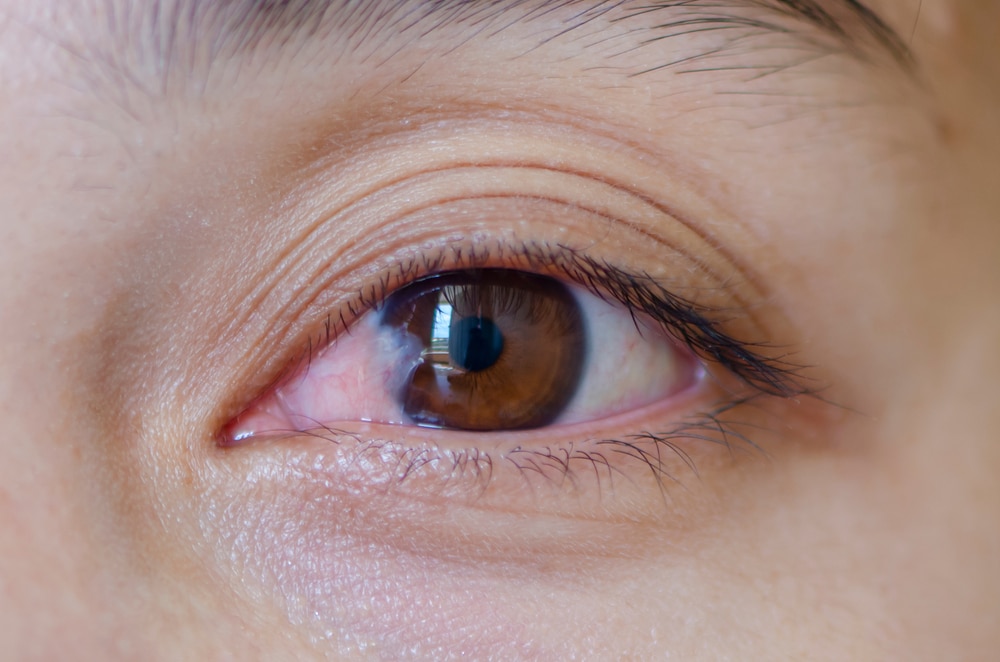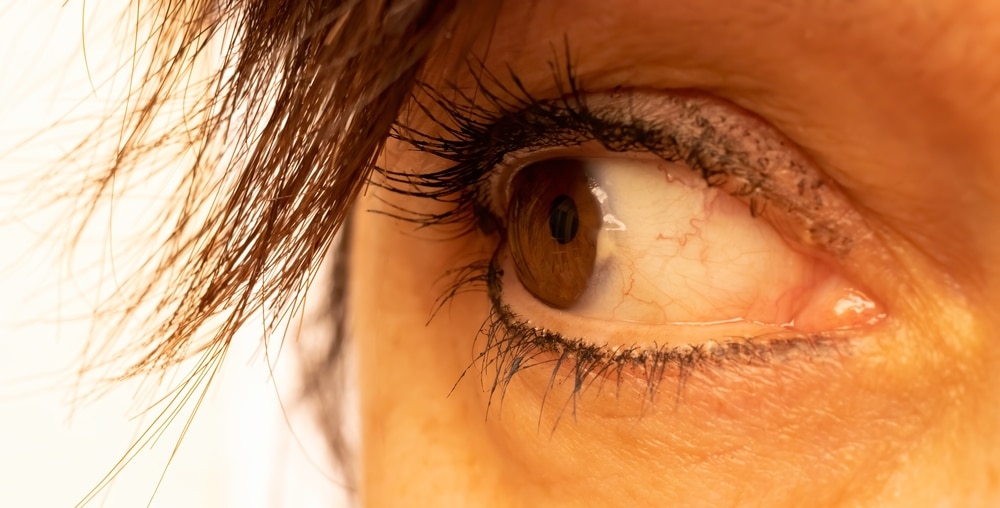
Pterygia & pingueculae are both benign conditions of the conjunctiva (clear skin covering the white part of the eye). They usually occur in the inner or outer corners of the eye and can become larger over time.
Pterygia & pingueculae can both cause recurrent foreign body sensation, redness, tearing, burning, dryness and irritation. A pterygium can occasionally cause blurry vision if there is significant growth in the cornea.
Sun exposure, genetic factors, and environmental factors contribute to their occurrence and growth.
A pterygium is a wing-shaped fibrovascular growth that can extend onto the cornea from the inner or outer corner of the eye. It is thought to be caused by sun and UV light exposure but can be exacerbated by other environmental factors.

When very small, it may not be noticeable, but if it becomes larger, a pterygium can become more cosmetically visible. When quiet and uninflamed, there may be minimal to no symptoms. When inflamed, a pterygium can be much more symptomatic and stimulate growth. Inflammation can be exacerbated by sunlight exposure, wind, dust, and dry eye.
An inflamed pterygium can be treated with artificial tears or certain prescription drops temporarily to quiet the inflammation, but these will not make the growth disappear. If a Pterygium becomes large enough to threaten vision or is a cause of persistent irritation, it can be removed with surgery.
A pterygium is a growth on the eye that is caused by environmental exposure, such as sun and wind. Indications for removal of pterygia are decreased vision (from the pterygium pulling on the cornea causing astigmatism or covering the visual axis), growth of the pterygium so that it threatens the visual axis, recurrent or chronic inflammation, interference with contact lens wear, or cosmesis.
During surgery, the pterygium is dissected off the surface of the eye. The area over the white of the eye (the sclera) from where the pterygium is removed, is covered with your own conjunctival tissue which is taken from the top part of the eye. This greatly diminishes the rate of recurrence of the pterygium.
A pinguecula is a benign whitish or yellowish spot or bump on the conjunctiva in the inner or outer corner of the eye. It can be small or large, flat or elevated, and does not grow onto the cornea.

Usually, pingueculae do not have any symptoms but occasionally can cause such symptoms as recurrent redness and irritation.
Like pterygia, this irritation can be treated with artificial tears or prescription drops, which can quiet the inflammation. Surgical removal is usually not necessary unless a pinguecula becomes persistently irritating despite treatment.
There are other less common types of growth that can occur on the eye that may not be a pterygium or pinguecula. Some of these growths may be serious. If you think you have a growth that has not been diagnosed by an eye doctor, you should make an appointment for proper evaluation and treatment.
Wheaton Eye Clinic’s unparalleled commitment to excellence is evident in our continued growth. Today we provide world-class medical and surgical care to patients in six suburban locations—Wheaton, Naperville, Hinsdale, Plainfield, St. Charles, and Bartlett.
(630) 668-8250 (800) 637-1054